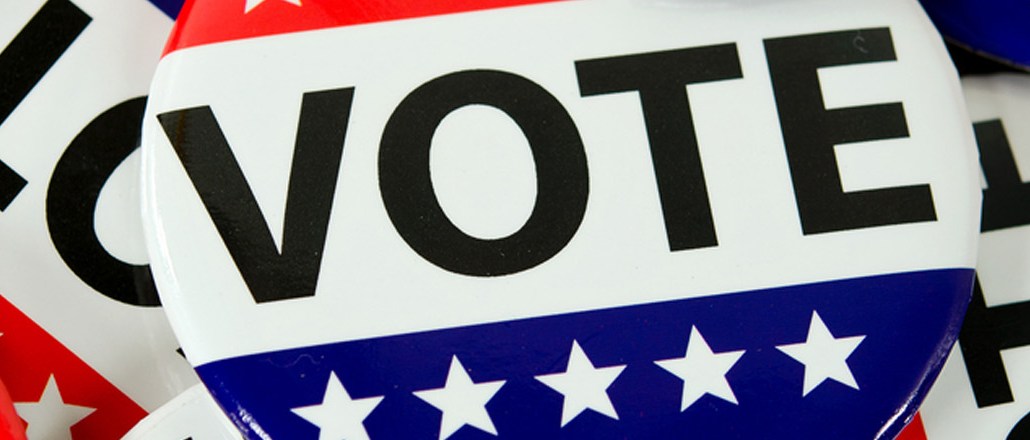
As the U.S. political race draws to a climactic close, even publishers in the U.K. are capitalizing on reader interest to try new products and gain new audiences.
While the unpredictable nature of the campaign run has meant booming traffic figures for publishers — many will continue live blogging, interactive graphics and social media updates over the next few days — the election also presents an opportunity to convince audiences to stick around after the dust has settled.
U.S. publishers, for their part, are trying a number of tactics to expand its readership beyond Nov. 9. Here’s a look at what the U.K. and European publishers will be up to.
Sky News 360
In addition to live streaming Sky News TV channel on Facebook, Twitter and YouTube, Sky is producing 360-degree video of the election night. It has set up eight 360-degree cameras, two in New York, several in swing states, one each at Clinton and Trump events, and one in the London newsroom. Once the votes are counted, Sky News will release a 360-degree video, roughly five minutes long, to give an immersive account of election night.
“It has to be visually engaging and grab people in the first few seconds,” said Richard Evans, head of social media and audience development at Sky. “People would have seen plenty of coverage on their timelines.”
Sky News has chosen carefully the types of stories to tell in 360 degrees, having done several in the past. Its video on the migrant crisis in Calais has gained over 100,000 views. The election night highlights will be the first VR content Sky has done since the launch of its Sky VR app, released in at the beginning of October.
The Guardian’s chatbot
The Guardian has chosen this week to tweak the delivery of content for its Facebook Messenger bot. Martin Belam, social and new formats editor at The Guardian, said that now was the time to start promoting the bot more widely. Previously, the bot sent out automated messages, and has been having around 1,000 conversations a day. Now journalists will have a hand in crafting what goes out.
“The curation layer allows us to look at our analytics in the morning, see what is being widely read on Facebook already, and add those into the mix,” he said.
The bot has a variety of automated greetings messages, like, “I will keep you up-to-date with the latest news.” Each day, it sends one as the morning briefing and picks the top five news stories on the relevant homepage. Subscribers choose one of three different editions — at 6 a.m., 7 a.m. or 8 a.m — that best fits in with their morning routine. It’s intended to be a very simple user experience: Readers choose keywords on topics they want to hear more off. By Christmas, Belam hopes to have more data on usage patterns to see where else it can add features.
Competing for speed, in the States, The Guardian U.S. is sending alerts to its app users on the lock screen. Using Associated Press data, users will see the latest number of electoral votes won, how many states have been called, and can access the live data visualization of the results. The publisher also used pushed alerts during the EU referendum election, to a lesser extent.

The Times’ personal emails
With a paying digital readership of 182,500, The Times has used the election to give a little added extra back to subscribers. A widget on its page lets readers type in their own questions about the election. The publisher chooses the best ones, asks its U.S. correspondents and adds the answers back into the widget in 1o0 words or less — then emails the answers to the reader directly.
Questions so far have included, “Would Mexico ever have to pay for a wall bordering the US?” And “Did Trump think he would get as far as he has, given that this is his first foray into politics?”
Sam Joiner, interactive news editor at The Times, said they are looking to do the same for Brexit coverage too. “It has been a nice, personal way for readers to get the most from their subscription and feel involved in our U.S. election coverage,” he added.
European publishers share content
Europe’s numerous markets and languages make any pan-continent content a challenge. Even so, the seven publishers involved in the Leading European Newspaper Alliance organization are sharing and translating content across the network.
Launched in March 2015, members of LENA include publishers Die Welt (Germany), El País (Spain), La Repubblica (Italy), Le Figaro (France), Le Soir (Belgium), Swiss German-language newspaper Tages-Anzeiger and French-language newspaper Tribune de Genève. Twelve journalists from the publishers are providing written coverage, plus images and live updates on social under the hashtag #EuropeGoesUS.
The coverage can be filtered by correspondent or location through interactive maps of the U.S. available on their websites. In an interview with Journalism, LENA president Javier Moreno Barber said LENA will be covering the costs, including travel. “Having 12 additional reporters during the campaign, on top of each newspaper’s correspondents, will allow for a more diverse, detailed and lively coverage, which otherwise would not be affordable for each partner on its own.”
More in Media

YouTube is under fire again, this time over child protection
Adalytics Research asks, ‘Are YouTube advertisers inadvertently harvesting data from millions of children?’

Media Briefing: Publishers pump up per-subscriber revenue amid ad revenue declines
Publishers’ Q2 earnings reveal digital advertising is still in a tight spot, but digital subscriptions are picking up steam.

Lessons for AI from the ad-tech era: ‘We’re living in a memory-less world’
Experts reflect how the failures of social media and online advertising can help the industry improve the next era of innovation.
Ad position: web_bfu